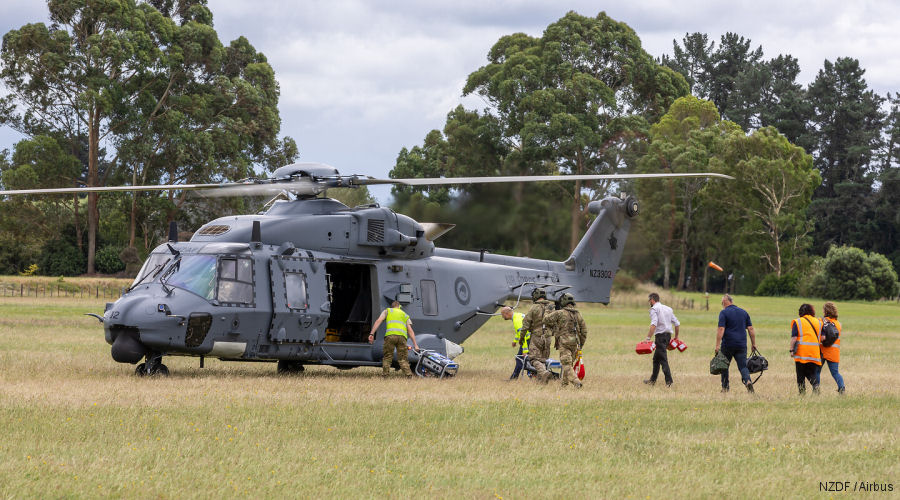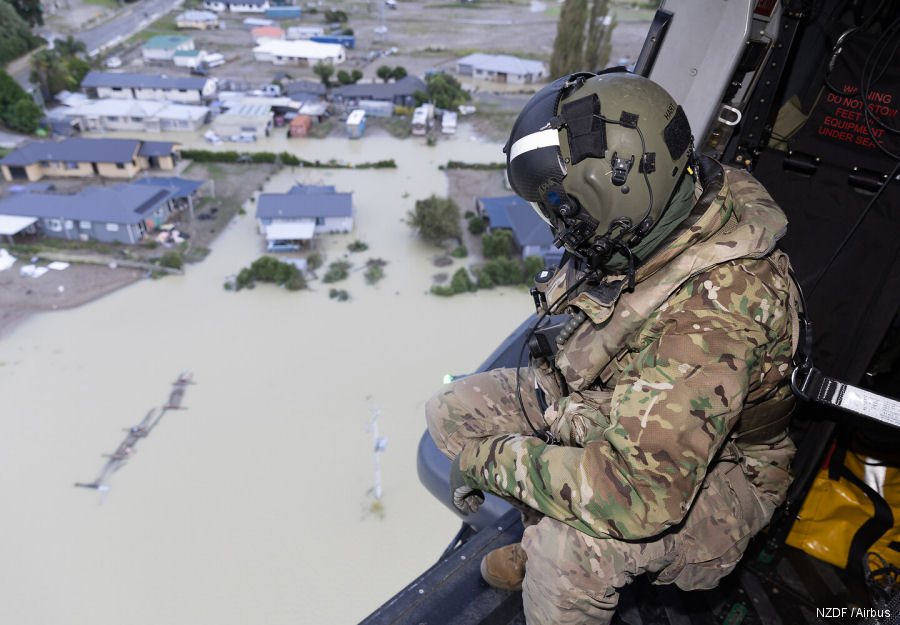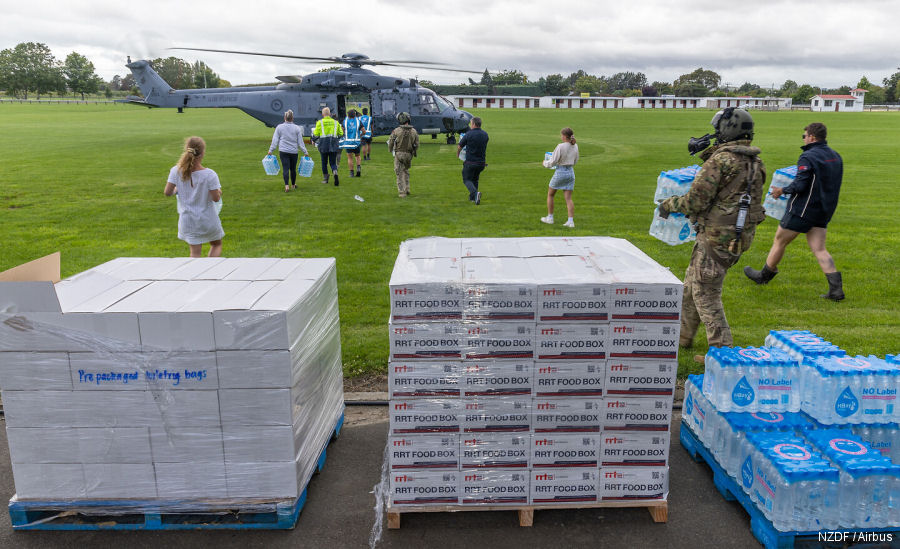
This severe weather event followed high rainfall in January that had already caused extensive damage to the North Island, including in Auckland.
A key contributor to the disaster relief operations led by the National Emergency Management Agency and regional civil emergency authorities, the New Zealand Defence Force (NZDF) was able to rely on a significant ally throughout the rescue operations: the NH90.
Even before Gabrielle reached New Zealand, first responders were part of careful planning and organisation. Ahead of the cyclone, the NZDF had personnel on stand-by, ready to assist with the emergency response: air and land elements were quickly deployed to assist with the immediate response including the evacuation of residents, and provided reconnaissance flights to help authorities understand the impact of the cyclone and assist with planning relief efforts.
At the height of the climatic event, extensive damage to roads, and widespread power and communications outages caused multiple operational challenges for all agencies engaged in the emergency response. The NZDF mobilised nearly 1,000 personnel, along with several ships, aircraft, and numerous military vehicles.
To sustain the disaster relief effort, No. 3 Squadron deployed three NH90 helicopters to Hawke’s Bay and one to Auckland.
“By the end of the first week of emergency response, the Air Force’s NH90s had distributed more than 42.5 tonnes of essential supplies throughout Hawkes Bay and Tairāwhiti, flying for more than 120 hours and transporting more than 260 civilian and military personnel, along with 17 dogs and five cats, and had underslung more than 13 tonnes of equipment”, says Wing Commander Greg Jane, Commanding Officer of No.3 Squadron.
The NH90 proved to be a versatile asset, supporting No.3 Squadron all along. The rotorcraft performed a variety of missions, ranging from rescue and relocation of individuals in peril during the first stage of operations, to transporting necessities such as food, water and medical supplies to isolated or cut-off communities later on.
Evacuating residents from flooded areas
Using the NH90’s powerful capabilities, members of No.3 Squadron evacuated residents from flooded areas by winching them off the roofs of their houses: “Our NH90 helicopters evacuated around 250 people in Hawke’s Bay, from around the Puketapu area, as well as transporting other people from Gisborne to Wairoa and Napier”, says Wing Commander Jane.
To help mitigate the harsh flying conditions, with low clouds and heavy rain, No.3 Squadron could count on the military helicopter’s reliability in a hostile operating environment. According to Wing Commander Jane, “one advantage that the NH90 has over many helicopters is its size and weight. This weight provides some stability from gusty conditions, which may have provided some advantage.”
Consequently, over the course of February 2023, the crew’s NH90 logged a record number of flight hours since the introduction of the rotorcraft in the Royal New Zealand Air Force’s fleet: “The NH90 is an incredibly capable helicopter, and performed exceptionally well during this operation. 302.9 hours were flown which is around 60 hours more than the previous record for flying hours in a month”, explains Wing Commander Jane.
The rate of operations pushed people to the limit, as a large number of personnel were deployed to support the Rotary Wing Task Unit. “Most of the No.3 Squadron aircrew were in Hawke’s Bay at some point, supported by the entire squadron maintenance team who worked tirelessly – be that a small group deployed in Hawke’s Bay or those back at Royal New Zealand Air Force Base Ohakea, who were required to conduct crucial servicings on the aircraft to keep the operation going”, says Wing Commander Jane.
This joint effort from No.3 Squadron and the entire NZDF also relied on Base Ohakea: a deployed refuel team operated in Hawke’s Bay with the NH90, and other refuellers provided a bridge from Ohakea to ensure the aircraft did not need to draw on local fuel supplies.
Overall, the smooth organisation of the disaster relief operations and the NH90’s exceptional capabilities for emergency response were the perfect match to support the crew’s relentless efforts to save lives in the aftermath of cyclone Gabrielle.
“We asked the team to surge and they did. The NZDF is a Force for New Zealand, and when New Zealand or New Zealanders need our support, all of our people drop everything to do so. Everyone involved felt extremely grateful that they were able to help”, Wing Commander Jane concludes. No.3 Squadron and its fleet of NH90 remain mobilised throughout the recovery efforts on the East Coast of the country


See also |
NH90 TTH in




